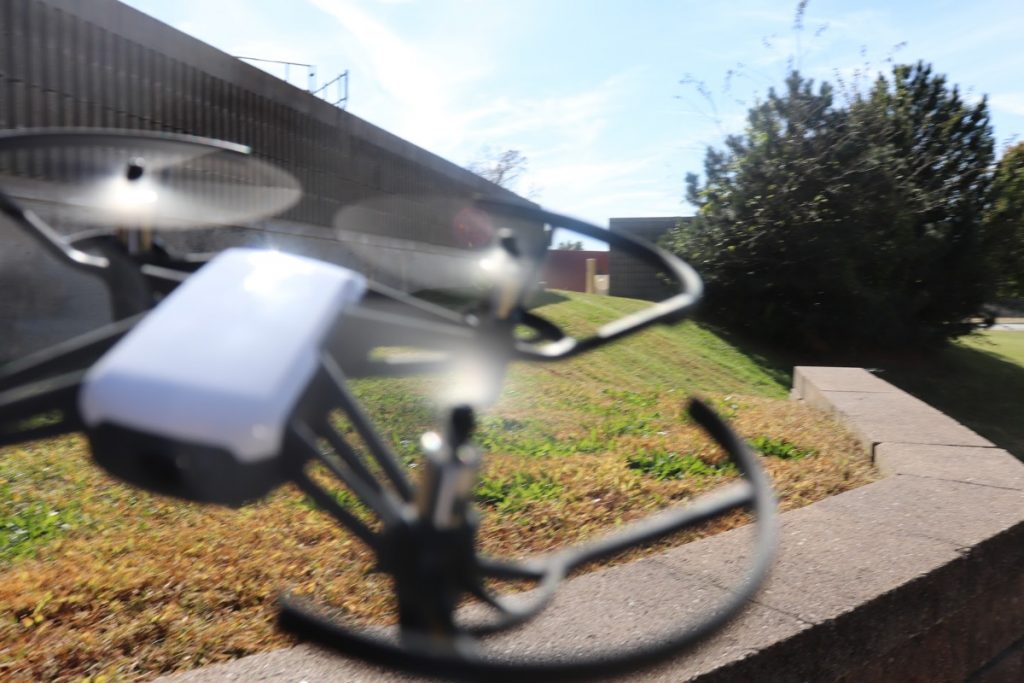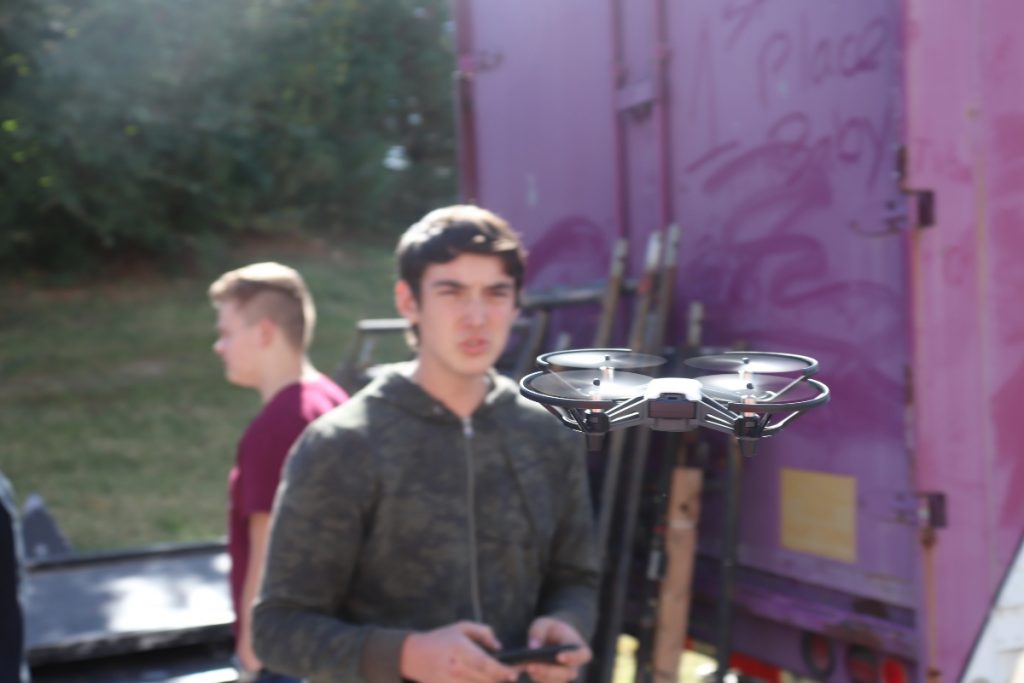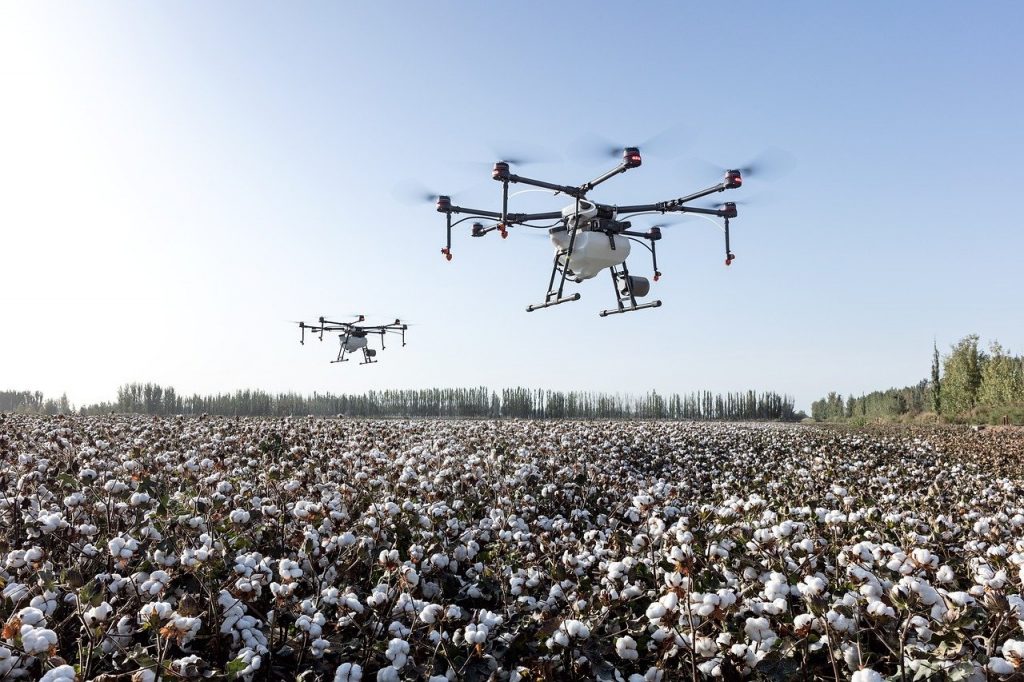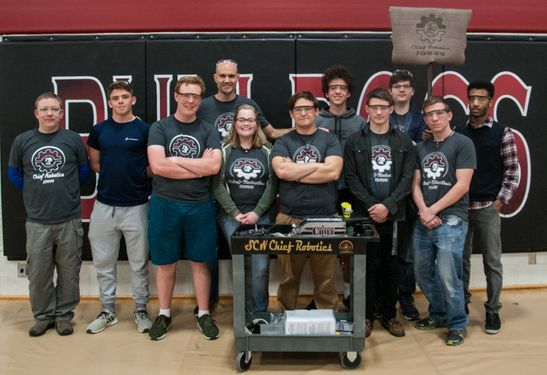Drones in High School Education: An Interview with Jeremy Jackson of St. Charles West High School, Recipient of a 2019 Grow Rural Education Grant
BY Zacc Dukowitz
23 January 2020Jeremy Jackson is a teacher at St. Charles West High School in St. Charles, MO.
In 2019, his students were recipients of a Grow Rural Education Grant, which provides rural school districts with grant money to enhance STEM (Science, Technology, Engineering, and Math) education.
The grant Jackson’s school received was for $10,000. The school used the grant money to buy 15 drones, along with other technology to support their robotics team and the school’s video production classes.
We wanted to speak with Jackson to learn more about how he won the grant, how his school has incorporated drones into the classroom, and the different ways they’re educating students about drone safety and applications.
[Did you know? UAV Coach offers a scholarship that provides high school students with free access to Drone Pilot Ground School, our test prep course for the FAA’s Part 107 exam. Learn more about our high school scholarship here.]

Photo credit: SCW Chief Robotics
Begin interview
—
What do you teach at St. Charles West?
The department I teach in offers classes in technology, specifically industrial tech. I teach classes on a range of subjects, from home repairs, to video production, to engineering, to robotics and advanced robotics.
How did you find out about the Grow Rural Education Grant?
Our school has a First Tech Challenge (FTC) Robotics team, and that team was already receiving an annual grant of $1,000 a year to help with registration and entry fees as well as buying some of the parts for our robotics.
In 2018, when the coordinator for that grant visited our school she mentioned that there were also larger rural educational grants, which we could qualify for since we were in a more rural area of Missouri.
She encouraged us to apply, but I was hesitant at first because I wasn’t sure exactly how we could use the money.
But last year I started thinking more about it, and realized we could use the funds to buy drone technology, which would dovetail perfectly with the educational work we already do in both robotics and video production.
Also, I knew that farmers are starting to use drones quite a lot for things like spotting specific areas of their fields that need treatment instead of treating the entire field with chemicals, which is more effective and healthier. Since the grant is rural-focused I thought that the agricultural applications for drones could be helpful in our grant proposal.
So we decided to go ahead and submit the application. We were very excited when it was accepted.
What kinds of drones did you buy with the grant money?
We bought 14 Tello drones and one Mavic 2 Pro.

Photo credit: SCW Chief Robotics
How do you use those drones in (or out) of the classroom?
I use the drones in both my robotics and my advanced robotics class, as well as in my live video production and short film production classes.
We’re using the Tellos to train students on flying so they can work their way up to flying the Mavic. The Tello drones are really great beginner drones for the classroom because students can fly them on their smartphones using an app. And we use the Mavic 2 Pro for video production.
Also, in robotics we’re using the Tellos to work on programming because they can be programmed from a student’s smartphone. We often do block programming in the robotics class, and that’s similar to the programming that the Tellos use.
When working with drones in the classroom we talk a lot about how many different ways people are using drones these days. They’re not just being used in video production or agriculture—there are so many other applications out there now.

Image source
How are you teaching students to fly?
For teaching students flying we’ve come up with several different fun exercises.
Here are a few:
- Drone tic-tac-toe. We set nine steps out in a pattern, and then the students have to fly their drone from one side of the steps to the other, taking off and landing on each spot as they go to help build up their pilot skills.
- Obstacle courses. Setting out objects in the gym that students have to fly around, through, over, or under.
- Practice Missions. We attached a pipe cleaner to some of the Tellos and then students had to fly an obstacle course and pop a balloon with it. The idea here was to simulate the kind of flying that might be needed by a public safety agency when fighting a fire or finding a missing person, where you had to fly difficult terrain and then conduct a task at the end.
Can you tell us more about the First Tech Challenge Robotics team at St. Charles West?
First Robotics puts on robotics competitions all over the world.
All skills and levels of robotics can compete, both technical and non-technical, which makes it a great pipeline for developing STEM interest among students.
They have regional competitions, and they also host competitions at the state level, and then they have world championships, too.

The SCW Chief Robotics Team
Teams come from all over to compete—from Jamaica and China, everywhere in the world. The competition used to take place in St. Louis, but in the last few years they moved it and it’s now hosted at two different locations, one in Detroit and the other in Houston.
There are different levels of competition for different age groups. We compete in the FTC, or First Tech Challenge, which is for high school students.
At our level, we’re competing with robots that cost between one and two thousand dollars. These robots are typically created with a kit of parts and can be programmed and controlled with a smartphone.
The next level up, which is the highest level, is the FRC, or First Robotics Challenge. Those robots are more in the 10 to 30 thousand dollar range, and require teams to keep an engineering notebook, do fundraising, and promote their efforts with videos and messaging on the internet.
In addition to FTC, our robotics team also participates in the BattleBots competition. That’s a division of the National Robotics League, where the robots do what it sounds like in the name of the event, and fight each other. It’s fun, and it provides students with extra driving practice and practice working with robots.
In what ways have you been able to teach your students about drone safety?
In the process of learning how to fly we talk a lot about how to fly safely, emphasizing the importance of keeping your drone in the line of sight and at a safe distance from people while in flight.
We have students start out by flying about three feet above the ground only, and then progressively work up from there as they gain skill and confidence.
One of the great things about learning to fly on a Tello is that students can learn and make mistakes on them without the danger of anyone getting hurt or the drones getting damaged because they’re so small and lightweight.
When students transition from the Tello to the Mavic, which has more weight to it and props that spin faster, we make sure to talk even more about safety and the importance of not flying over or near people.
Have you or any of your teachers obtained a Part 107 drone license?
Not at this point.
We’ve looked into doing it, both for ourselves as teachers and for the students who are sixteen or older, since it would be neat for them to leave the class with that certification. But it’s not something we’ve decided to pursue just yet.
About the Grow Rural Education Grant
Farmers can nominate their local rural, public school district to apply for $15,000 STEM grants in 2020 now through April 1.
After a school district receives a nomination, Bayer Fund will notify the district and encourage administrators and teachers to submit a grant application describing their desired STEM project by April 15, 2020.
More information about the Grow Rural Education Grant can be found here on the Bayer website.
Do you work with high school students using drones, or are you in high school yourself? Hop into this thread on the UAV Coach community forum and join the conversation about this interview.


